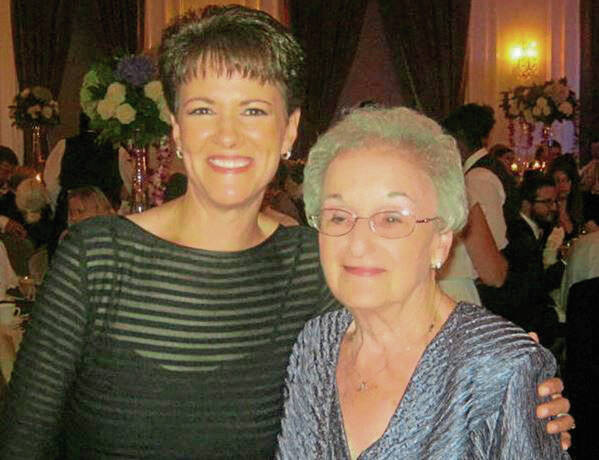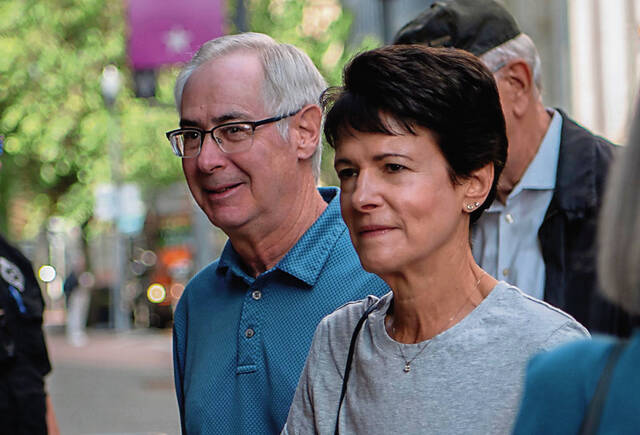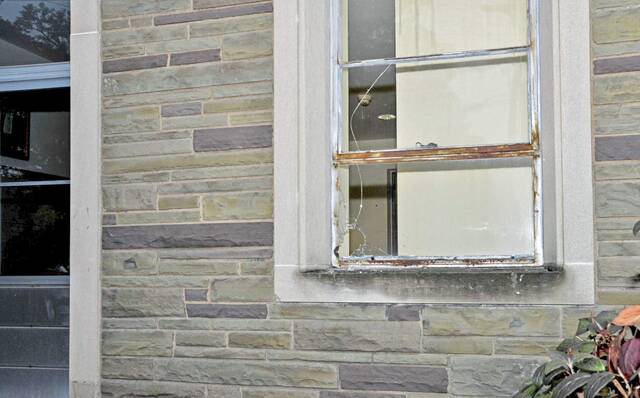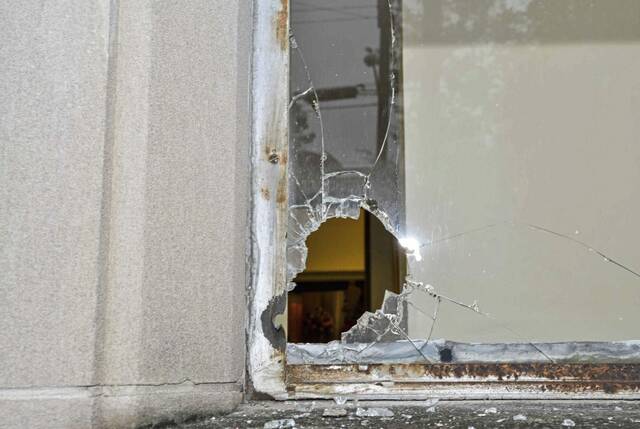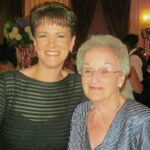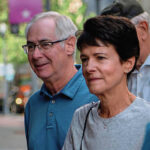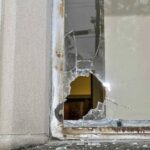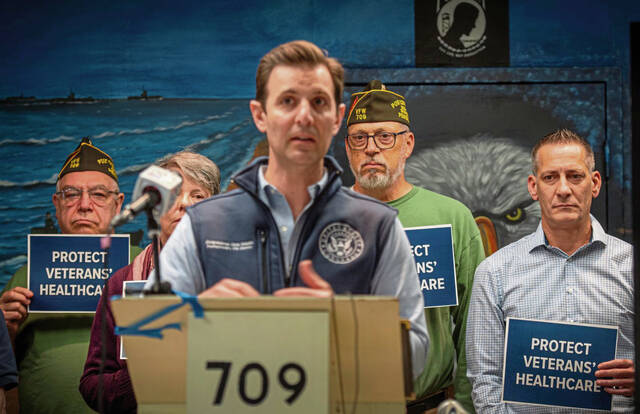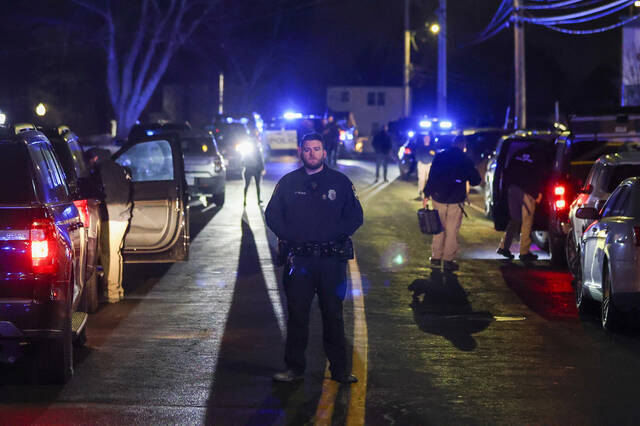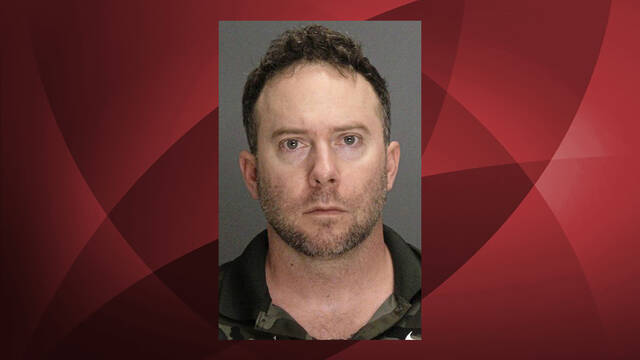Andrea Wedner and her 97-year-old mother, Rose Mallinger, lay head-to-head under their pew, hiding from the man who had just fired an AR-15 repeatedly inside the Tree of Life synagogue.
They were frantic.
Wedner had seen the man later identified as Robert Bowers standing in the doorway at the back of the synagogue’s Pervin Chapel.
“He was holding a big, long gun,” she said.
As Wedner called 911, begging for the police to come, she tried to keep her mother calm.
“We were filled with terror,” Wedner said. “It’s indescribable. We thought we were going to die.”
On Wednesday morning, Wedner became the last witness in the prosecution’s case against Bowers, who is charged with killing 11 people worshipping at the synagogue that morning.
The government rested its case after lunch.
The defense called no witnesses and also rested.
Closing arguments will be held Thursday.
The trial against Bowers, 50, of Baldwin is in the guilt phase and began May 30. If he is convicted, the case will move into a penalty phase, expected to last six weeks.
The government is seeking the death penalty.
Bowers is charged with 63 counts, including that he killed the victims because they were Jewish.
During opening statements, the defense admitted Bowers attacked the synagogue but claimed he was not motivated by the victims’ religion. Instead, they said, Bowers was angry that Jews were assisting the refugee resettlement group HIAS.
Those killed were members of the Tree of Life-Or L’Simcha, Dor Hadash and New Light congregations. They included Rose Mallinger, 97; Bernice Simon, 84, and her husband, Sylvan Simon, 86; brothers David Rosenthal, 54, and Cecil Rosenthal, 59; Dan Stein, 71; Dr. Jerry Rabinowitz, 66; Joyce Fienberg, 75; Melvin Wax, 87; Irving Younger, 69; and Richard Gottfried, 65.
On Wednesday, prosecutors called their final four witnesses — two FBI staffers, a Pittsburgh police officer shot multiple times responding to the attack and Wedner.
***
The morning of Oct. 27, 2018, had started like every other Saturday for the past six years for Wedner and her mom.
Wedner, who lived her whole life in Squirrel Hill, picked up Mallinger around 9:35 a.m. and drove to the Tree of Life synagogue at Wilkins and Shady avenues. They entered the chapel — where Wedner had been married years earlier — for the start of worship services.
Wedner helped her mom, who walked with a cane, to their pew on the left, fourth from the back. They knew it was theirs when they saw the worn wood on the seat.
Like every Saturday, Mallinger expected to read the Prayer for Peace.
But just a few minutes into the service, Wedner testified, they heard a loud crashing sound and then the sound of gunfire.
Mallinger asked her daughter, “What do we do?”
“We have to get down,” Wedner told her mom.
“So we got down.”
She grabbed her purse and helped her mother to the floor. As she called 911, Wedner tried to calm her mom.
“Please, send somebody over. There’s been a shooting. People have been shot,” Wedner told 911. “He’s out there somewhere.”
“He’s downstairs somewhere, I think. He keeps shooting and shooting.”
Wedner told the operator that she couldn’t move.
“Oh, God. Oh, God,” she said. “Please hurry, I’m scared.”
Then, “Oh my God. I hear him.”
To her mom, who was crying, “Shh. Be quiet. Quiet.”
Mallinger continued to cry.
“Shh. Shh. Be quiet. Shh.”
And then, screaming as Mallinger and Wedner were shot.
“I saw my right arm get blown open in two places and my right hand,” Wedner said.
She described the pain as worse than anything she’d ever experienced.
“It looked like shredded, raw meat, and it was a lot of blood,” Wedner told the jury.
She suffered cuts to her face, chest and forehead from shrapnel.
“I just laid on the floor and didn’t move in case he came back,” she said. “I didn’t want him to know I was alive.”
Wedner knew her mother would not survive her wounds.
“I wasn’t going to leave my mother, and I didn’t know where he was,” she said.
Wedner lay with her mother, checking her pulse and listening as she struggled to breathe.
As she did, Wedner testified, so many thoughts went through her mind.
“Does my family know what happened. Do they think I’m dead?”
Would she get to walk her daughter — scheduled to get married less than six months later — down the aisle with her husband?
“Would I lose my hand? Would I lose my arm? Would I be able to work again? Would I live or would I die?”
Then, Wedner said, she saw men enter the chapel wearing fatigues.
“I knew they were the good guys.”
As her rescuers worked their way through the chapel, Wedner said, she moved her leg so they’d know she was alive.
Finally, when they told her it was safe to get up, Wedner described her last moments with her mom.
“I kissed my fingers, and I touched my fingers to her skin. I cried out, ‘Mommy.’ ”
Then, she stepped over the body of Cecil Rosenthal, saw Rabinowitz at the top of the stairs and fled.
She spent 10 days in the hospital and has had three surgeries on her arm.
Mallinger’s funeral was the last one to be held so that Wedner could attend.
Wedner, who remained composed throughout her testimony, asked the government to not play any of her 911 call while she was in the courtroom.
The recording captured audio of her and her mother being shot. After she left the courtroom following her testimony, the government played the recording for the jury.
***
Pittsburgh police SWAT Officer Timothy Matson said it felt like a dog had run into his legs.
Matson, who joined SWAT to be part of a team environment, was the first officer to enter the upstairs classroom in the synagogue as they searched for additional victims and the shooter.
It was completely dark.
Matson said he was clearing the room, which opened to the left, when he was knocked off his feet.
He’d been shot in his leg.
“From there, next thing I remember I was in the darkest, most calm place in my life,” he told the jury.
He suspects he passed out.
But then, Matson said, he remembered someone falling on top of him. It was his SWAT teammate, Michael Saldutte.
The first two thoughts Matson said he had were, “(Expletive), you just got shot in the head.”
And then, “Do something.”
He remembers just bits and pieces as his colleagues dragged him from the room, and then telling another officer, “I’m (messed) up.”
Matson testified that he remembered one of their tactical medics telling him, “Man the (expletive) up and breathe.”
And then the pain as they tried to cross his legs to carry him.
Matson knew he’d been shot in the left leg but didn’t know he’d also been shot in the right.
“I told them it (expletive) hurt,” he testified, laughing.
Matson said his next memory was officers and medics trying to get him — all 6 feet, 4 inches and 315 pounds — onto a stretcher.
“In gear, I’m 365 (pounds),” he said. “They were definitely struggling.”
Then, Matson recalled, he saw the faces of his fellow officers as they carried him out of the building.
He described them as “poker faces.”
“‘Man, I must be in bad shape,’” he said he thought. “These were police officers, the way they were looking at me.”
Matson also described the pain he felt when they put another tourniquet on his leg.
“The tourniquet definitely hurt worse than being shot — indescribable amount of pain,” he said.
As he testified, Matson showed the jury his olive-colored tactical vest — held together with zip ties to fit his large frame. It had two bullet holes, in the side and the back.
He also described his ballistic helmet and the hole where a round from Bowers went through and into the right side of his head.
Matson said that after the shooting, he had seven new holes in his body. His injuries included a fractured skull and right jaw, a shattered right knee cap, shattered left tibia and elbow, a cut tendon in his hand and a broken knuckle in his ring finger.
He was shot three times in his left buttock, and bullets were recovered from there and his knuckle.
In the years since the attack, Matson said, he’s had 25 surgical procedures, including one last year.
It took two years before he could return to work.
Asked by Assistant U.S. Attorney Soo Song if, given the chance, he’d be the first one to enter the classroom again, Matson answered, “Absolutely, I’d go through any door with my team anytime.”
***
Earlier Wednesday, the government called an FBI systems analyst to describe the computer setup he found during a search of Bowers’ home.
Bowers appeared to understand his fate on the morning of the shooting, and took calculated measures to ensure law enforcement could not search his computer or find his internet search history.
He set the homemade, Linux-based computer’s six hard drives in his Baldwin apartment to “sleep” for 200 minutes at 8:57 a.m. on the day of the shooting, then commanded the computer to “shred,” or erase, the first 8GB of each hard drive’s data, FBI systems administrator Peter Hammer told jurors.
The computer’s file system would have been located in that first 8GB of each drive, Hammer said.
The “shred” command rendered nearly all information on the computer — which boasted 2TB of space, equivalent to about 400 DVDs of data — “unobtainable,” he said.
The sequence of events during the shooting at the Tree of Life synagogue was chilling in how specific it sounded as FBI Special Agent Brian Collins recounted the timeline for the jury.
At 8:17 a.m. on Oct. 27, 2018, Bowers visited the HIAS website for the last time, Collins said.
At 8:57 a.m., Bowers then typed a simple command — “sleep200m && shred-s8G /dev /sd [bcdef]” — and set his computer’s six hard drives to erase their data.
At 9:48 a.m., Bowers accessed the alt-right social media network Gab on his Android cellphone, Collins said. “Screw your optics, I’m going in,” his final Gab.com post said.
The rest unfolded rapidly — 911 calls from panicked congregants at 9:54 a.m., 9:55 a.m., 9:57 a.m. and 9:58 a.m. A radio dispatcher sending police at 9:55 a.m.
Wax was shot in the basement at 9:56 a.m., Pittsburgh police Office Daniel Mead at 9:58 a.m., Collins said.
Bowers returned to shoot congregants in Pervin Chapel at 10:01 a.m., Collins said. Pittsburgh police Officer Michael Smidga then shot five times at Bowers, and Bowers fired back. Bowers then shot and killed Bernice Simon.
Then, a break.
Bowers reengaged with the police’s SWAT team at 10:53 a.m. and again at 10:59 a.m., Collins said.
Around 11 a.m., Bowers ran out of ammunition and appeared to be cornered. At 11:13 a.m., police handcuffed Bowers, the officer’s hands covered in blood, and took Bowers into custody.


